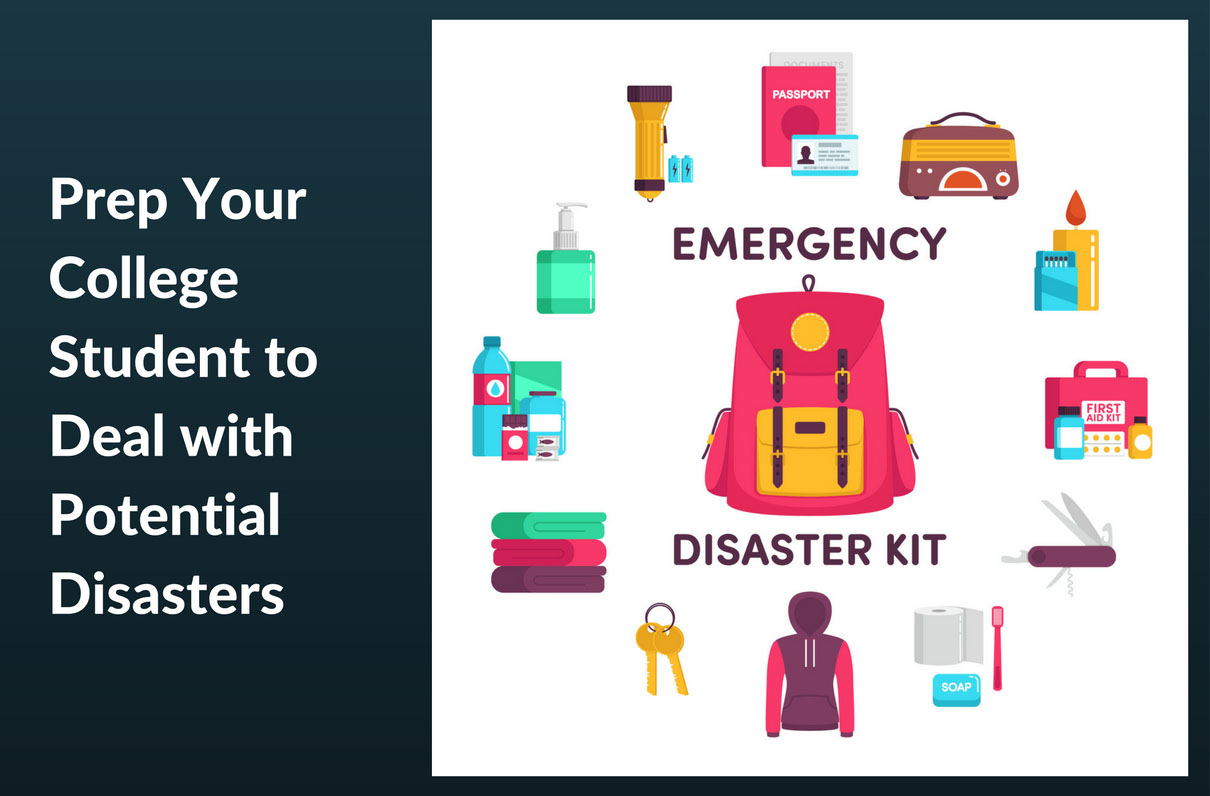We like to assume MilKids are ready for anything. All of those household moves have made them pretty resilient, after all. However, having an emergency supply kit on hand will ensure they’re prepared for any scenario, whether it’s a routine power failure or unprecedented hurricane.
Texas A&M has developed a good list of essentials to include in a kit:A three-day supply of water (one gallon per person per day);
- water purification tablets;
- a first aid kit with ibuprofen, aspirin, adhesive bandages, antibiotic/burn ointment, sterile gauze pads, etcetera.;
- a first aid handbook;
- prescription medications;
- extra clothing;
- food (choose nutritious items with a long shelf life that can be eaten without preparation. MREs, anyone?);
- extra blankets or pillows;
- a flashlight with extra batteries;
- portable cellphone charger;
- extra pair of contacts or eyeglasses;
- a fire extinguisher;
- a phone number of an out-of-state contact;
- an extra set of car keys;
- cash and change;
- waterproof matches and candles; and
- some form of personal identification (including copies of military IDs and passports)
Visit Texas A&M’s Disaster Preparedness Information site for additional items related to safety, comfort, sanitation, and cooking.
Army MilSpouse Kerri Beckert of Anchor Collegiate recommends storing all of your kid’s documents and prescriptions in a watertight bag. “I place them all in a quick grab duffel bag and place it under their bed,” she says. “If they ever have to evacuate, they could grab it and go. I didn’t spend a lot of money on the contents; most of the change of clothes and gear were from discount stores or old clothes or sneakers that they had replaced or didn’t wear. I did buy a quality duffel that was rain resistant and could be carried as a backpack as well. It may never be used, but it [gave me] peace of mind.”
Talking to your MilKid about having a go bag can be daunting, and you don’t want to come across as a paranoid doomsday prepper. As you discuss the need for the kit, don’t be alarmist. Explain they will probably never even need the bag — it’s just there for peace of mind, hidden away under the bed. Instead of focusing on recent disasters like Hurricanes Maria and Irma or the devastating fires in California, discuss lesser events like power outages.
To help your student feel comfortable about having an emergency kit, discuss it with them as you put a kit together for your home. It’s a good idea for you to have one in your house as well, and it illustrates that a go bag is something everyone should have.
I hope the list of things to include in a go bag is helpful. Is there anything else you’d add?
